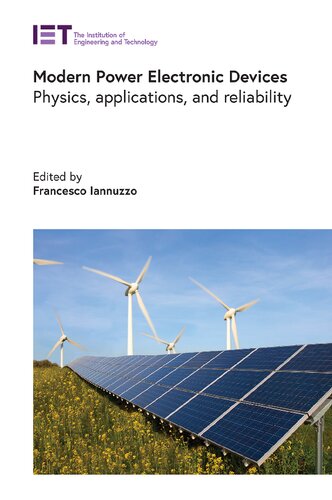

Most ebook files are in PDF format, so you can easily read them using various software such as Foxit Reader or directly on the Google Chrome browser.
Some ebook files are released by publishers in other formats such as .awz, .mobi, .epub, .fb2, etc. You may need to install specific software to read these formats on mobile/PC, such as Calibre.
Please read the tutorial at this link: https://ebookbell.com/faq
We offer FREE conversion to the popular formats you request; however, this may take some time. Therefore, right after payment, please email us, and we will try to provide the service as quickly as possible.
For some exceptional file formats or broken links (if any), please refrain from opening any disputes. Instead, email us first, and we will try to assist within a maximum of 6 hours.
EbookBell Team

5.0
50 reviewsPower devices are key to modern power systems, performing essential functions such as inverting and changing voltages, buffering, and switching. The increasing complexity of power systems, with distributed renewable generation on the rise, is posing challenges to these devices. In recent years, several new devices have emerged, including wide bandgap devices, each with advantages and weaknesses depending on circumstances and applications.
With a device-centric approach, this book begins by introducing the present challenges in Power Electronics, emphasizing the relevance of this discipline in today's scenario, and pointing out the key parameters to pay attention to from the application-design perspective. The next nine chapters dig into details, covering junction diodes, thyristors, silicon MOSFETs, silicon IGBTs, IGCTs, SiC diodes, SiC MOSFETs, GaN metal-insulator-semiconductor field-effect transistors (MIS-FETs), and GaN vertical transistors. A set of three chapters follow, covering key aspects from the designer's standpoint, namely module design and reliability, switching cell design, and IGBT gate-driving methods for robustness and reliability. A chapter outlining the prospects and outlooks in power electronics technology and its market concludes the book.
This book addresses power device technology at the design level, by bridging the gap between semiconductor- and materials science, and power electronic applications. It provides key information for researchers working with power electronic devices and for power electronic application designers, and it is also a useful resource for academics and industrial researches working on power electronics at the system level, such as industrial machine designers and robot designers.